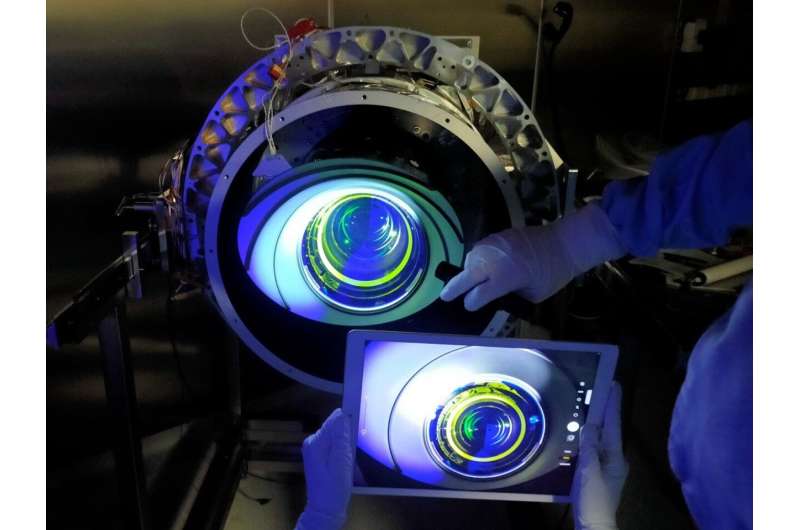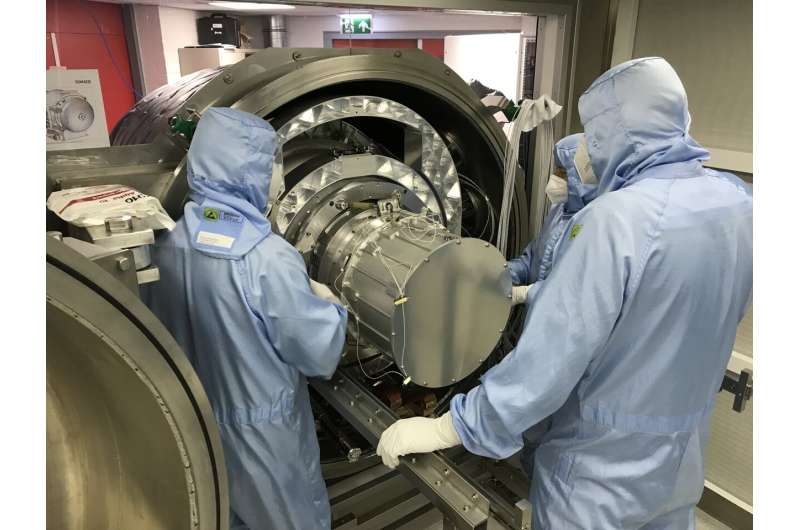ESA conducts first tests of exoplanet hunter Plato in space-like conditions

The ESA is working on a new exoplanet hunter mission called Plato, to be launched in 2026. Astronomers expect to discover Earth-sized planets within the habitable zone thanks to Plato's ability to spot smaller planets in larger orbits than current telescopes. SRON Netherlands Institute of Space Research is contributing to the project by testing Plato's cameras in a custom built space simulator. SRON researchers have finished testing the prototype, and all features function as expected. The framework for the cameras is now undergoing a month-long vacuum soak at ESA to evaluate its endurance under space conditions.
To simulate the extreme conditions of space, scientists at SRON Netherlands Institute for Space Research built a space simulator and tailored it to test Plato. It creates the environment found in space with its ultra-low pressure and low temperatures and also generates artificial starlight. A mechanism that still works under these extreme conditions moves the camera to allow testing the full field of view. The researchers can verify within one millionth part of a circle in which direction the camera is looking.
Over a six week period, Plato's prototype camera, called the Engineering Model, underwent an extensive test program to demonstrate the required performance and to make sure that this performance is not affected by cycling through all possible expected temperatures. "It turns out that all features of the Engineering Model function as expected," says Lorenza Ferrari, the project manager. "This is good news for Plato in general, and it is also shows that our space simulator works extremely well."

Over the spring and summer, additional simulators in Paris and Madrid will reproduce the test results achieved at SRON on the same camera, thus providing the necessary cross-calibration between the three setups. The final version of the Plato satellite, called the Flight Model, will contain 26 cameras. To keep up with the schedule towards the launch in 2026, testing all of them will be divided among Groningen (SRON), Paris (IAS) and Madrid (INTA). SRON will receive the first of eight Flight cameras in the fall of this year. Testing all of them will take until the end of 2023.
The optical bench that will secure the 26 cameras in place is now undergoing a month-long soak in Europe's largest thermal vacuum chamber at ESA to test its endurance under space conditions. Testing includes "thermal cycling" to assess how the optic bench responds to the shifting of temperature between light and darkness, and "thermal balance" to measure the operating temperature that it maintains in these conditions.
Provided by SRON Netherlands Institute for Space Research





















